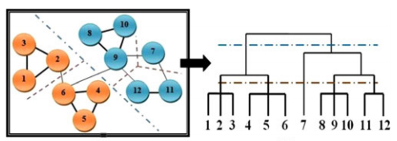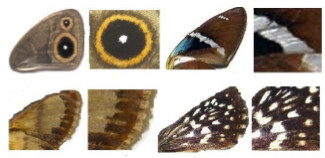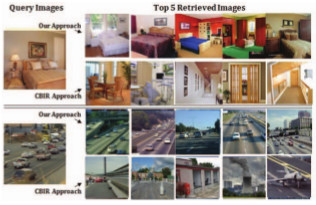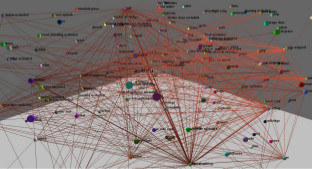
|
Visualization and Intelligent Systems Laboratory |

|
|
|
||||
|
|
|
|||
|
|
||||
|
|
|
Top Bangladeshi Online Casinos of 2024: Step Up Your Game
With 2024 underway, now is the perfect time to explore the best online casinos in Bangladesh. Elevate your gaming experience with these top platforms.
Benefits of Playing on JEETBUZZ and MCW: The Best Casino Sites in Bangladesh
There are many advantages to choosing trusted online casino sites in Bangladesh like JEETBUZZ and MCW. In this article, we will discuss some of the benefits these sites offer, known for their big wins and top-notch customer service. If you're new to online casinos, you should be aware of the various types of games offered by these platforms. Use our reviews to decide which site best meets your needs. Remember, both JEETBUZZ and MCW offer a range of perks that will make your gaming experience more enjoyable and profitable.
Baji999: Your Ticket to Mega Jackpots
Baji999 is the place where dreams turn into reality with massive payouts and thrilling games. Don’t wait—unlock your potential with Baji999 this year.
1xBet: Where Winning Knows No Limits
JeetWin offers a gaming experience like no other. With exciting games and lucrative promotions, 1xBet is the casino to watch in 2024.
Crickex: Your Reliable Partner in Winning
Join Crickex in 2024 for a secure, rewarding gaming journey. Consistent wins and top-tier service make Crickex a must-visit for any serious player.
Crickex Login: Your Gateway to Non-Stop Gaming
Seamlessly access all your favorite games with Crickex Login. Don't let anything stop your winning momentum in 2024.
Crickex Live: Thrills and Wins in Real-Time
Experience the excitement of live gaming with Crickex Live. Bet live and enjoy the excitement in real-time throughout 2024.
Baji Live: Unleash the Thrills of Live Gaming
With Baji Live, you get the best of live casino gaming. Dive into real-time action and win big in 2024.
MCW: Innovating the Online Casino Scene
MCW is pushing the boundaries of online casinos in 2024. MCW offers a variety of games and promotions that keep you coming back for more.
Babu88: Consistent Wins, Every Time
Enjoy user-friendly interfaces and high-payout games at Babu88. Start your winning journey with Babu88 in 2024.
Bet365: Bet on Success
From sports betting to casino games, Bet365 has it all. Join Bet365 for a comprehensive betting experience in 2024.
MCW: Elevate Your Casino Experience Fatatati
Join MCW and discover innovative Fatati gaming opportunities in 2024.
 Presented is a novel approach to automatically generate intermediate image descriptors by exploiting concept co-occurrence patterns in the pre-labeled training set that renders it possible to depict complex scene images semantically. This work is motivated by the fact that multiple concepts that frequently co-occur across images form patterns which could provide contextual cues for individual concept inference. The co-occurrence patterns were discovered as hierarchical communities by graph modularity maximization in a network with nodes and edges representing concepts and co-occurrence relationships separately. A random walk process working on the inferred concept probabilities with the discovered co-occurrence patterns was applied to acquire the refined concept signature representation. Through experiments in automatic image annotation and semantic image retrieval on several challenging datasets, the effectiveness of the proposed concept co-occurrence patterns as well as the concept signature representation in comparison with state-of-the-art approaches was demonstrated.
Presented is a novel approach to automatically generate intermediate image descriptors by exploiting concept co-occurrence patterns in the pre-labeled training set that renders it possible to depict complex scene images semantically. This work is motivated by the fact that multiple concepts that frequently co-occur across images form patterns which could provide contextual cues for individual concept inference. The co-occurrence patterns were discovered as hierarchical communities by graph modularity maximization in a network with nodes and edges representing concepts and co-occurrence relationships separately. A random walk process working on the inferred concept probabilities with the discovered co-occurrence patterns was applied to acquire the refined concept signature representation. Through experiments in automatic image annotation and semantic image retrieval on several challenging datasets, the effectiveness of the proposed concept co-occurrence patterns as well as the concept signature representation in comparison with state-of-the-art approaches was demonstrated.
 A new automated identification and retrieval system is proposed
that aims to provide entomologists, who manage insect
specimen images, with fast computer-based processing
and analyzing techniques. Several relevant image attributes
were designed, such as the so-called semantically-related
visual (SRV) attributes detected from the insect wings and
the co-occurrence patterns of the SRV attributes which are
uncovered from manually labeled training samples. A joint
probabilistic model is used as SRV attribute detector working
on image visual contents. The identification and retrieval of
moth species are conducted by comparing the similarity of
SRV attributes and their co-occurrence patterns. The prototype
system used moth images while it can be generalized
to any insect species with wing structures. The system performed
with good stability and the accuracy reached 85%
for species identification and 71% for content-based image
retrieval on a entomology database.
A new automated identification and retrieval system is proposed
that aims to provide entomologists, who manage insect
specimen images, with fast computer-based processing
and analyzing techniques. Several relevant image attributes
were designed, such as the so-called semantically-related
visual (SRV) attributes detected from the insect wings and
the co-occurrence patterns of the SRV attributes which are
uncovered from manually labeled training samples. A joint
probabilistic model is used as SRV attribute detector working
on image visual contents. The identification and retrieval of
moth species are conducted by comparing the similarity of
SRV attributes and their co-occurrence patterns. The prototype
system used moth images while it can be generalized
to any insect species with wing structures. The system performed
with good stability and the accuracy reached 85%
for species identification and 71% for content-based image
retrieval on a entomology database.
 We introduce a novel approach that allows the retrieval
of complex images by integrating visual and semantic
concepts. The basic idea consists of three aspects. First,
we measure the relatedness of semantic and visual concepts
and select the visually separable semantic concepts as elements
in the proposed image signature representation. Second,
we demonstrate the existence of concept co-occurrence
patterns. We propose to uncover those underlying patterns
by detecting the communities in a network structure. Third,
we leverage the visual and semantic correspondence and the
co-occurrence patterns to improve the accuracy and efficiency
for image retrieval. We perform experiments on two popular
datasets that confirm the effectiveness of our approach.
We introduce a novel approach that allows the retrieval
of complex images by integrating visual and semantic
concepts. The basic idea consists of three aspects. First,
we measure the relatedness of semantic and visual concepts
and select the visually separable semantic concepts as elements
in the proposed image signature representation. Second,
we demonstrate the existence of concept co-occurrence
patterns. We propose to uncover those underlying patterns
by detecting the communities in a network structure. Third,
we leverage the visual and semantic correspondence and the
co-occurrence patterns to improve the accuracy and efficiency
for image retrieval. We perform experiments on two popular
datasets that confirm the effectiveness of our approach.
 Semantic concept detection is an important open
problem in concept-based image understanding. In this
paper, we develop a method inspired by social network
analysis to solve the semantic concept detection problem.
The novel idea proposed is the detection and
utilization of concept co-occurrence patterns as contextual
clues for improving individual concept detection.
We detect the patterns as hierarchical communities
by graph modularity optimization in a network with
nodes and edges representing individual concepts and
co-occurrence relationships. We evaluate the effect of
detected co-occurrence patterns in the application scenario
of automatic image annotation. Experimental results
on SUN’09 and OSR datasets demonstrate our approach
achieves significant improvements over popular
baselines.
Semantic concept detection is an important open
problem in concept-based image understanding. In this
paper, we develop a method inspired by social network
analysis to solve the semantic concept detection problem.
The novel idea proposed is the detection and
utilization of concept co-occurrence patterns as contextual
clues for improving individual concept detection.
We detect the patterns as hierarchical communities
by graph modularity optimization in a network with
nodes and edges representing individual concepts and
co-occurrence relationships. We evaluate the effect of
detected co-occurrence patterns in the application scenario
of automatic image annotation. Experimental results
on SUN’09 and OSR datasets demonstrate our approach
achieves significant improvements over popular
baselines.
 We addresses the problem of concept learning
for semantic image retrieval in this research. Two types of semantic concepts
are introduced in our system: the individual concept and the
scene concept. The individual concepts are explicitly provided
in a vocabulary of semantic words, which are the labels or
annotations in an image database. Scene concepts are higher
level concepts which are defined as potential patterns of cooccurrence
of individual concepts. Scene concepts exist since some
of the individual concepts co-occur frequently across different
images. This is similar to human learning where understanding
of simpler ideas is generally useful prior to developing more
sophisticated ones. Scene concepts can have more discriminative
power compared to individual concepts but methods are needed
to find them. A novel method for deriving scene concepts is presented.
It is based on a weighted concept co-occurrence network
(graph) with detected community structure property. An image
similarity comparison and retrieval framework is described with
the proposed individual and scene concept signature as the image
semantic descriptors. Extensive experiments are conducted on a
publicly available dataset to demonstrate the effectiveness of our
concept learning and semantic image retrieval framework.
We addresses the problem of concept learning
for semantic image retrieval in this research. Two types of semantic concepts
are introduced in our system: the individual concept and the
scene concept. The individual concepts are explicitly provided
in a vocabulary of semantic words, which are the labels or
annotations in an image database. Scene concepts are higher
level concepts which are defined as potential patterns of cooccurrence
of individual concepts. Scene concepts exist since some
of the individual concepts co-occur frequently across different
images. This is similar to human learning where understanding
of simpler ideas is generally useful prior to developing more
sophisticated ones. Scene concepts can have more discriminative
power compared to individual concepts but methods are needed
to find them. A novel method for deriving scene concepts is presented.
It is based on a weighted concept co-occurrence network
(graph) with detected community structure property. An image
similarity comparison and retrieval framework is described with
the proposed individual and scene concept signature as the image
semantic descriptors. Extensive experiments are conducted on a
publicly available dataset to demonstrate the effectiveness of our
concept learning and semantic image retrieval framework.